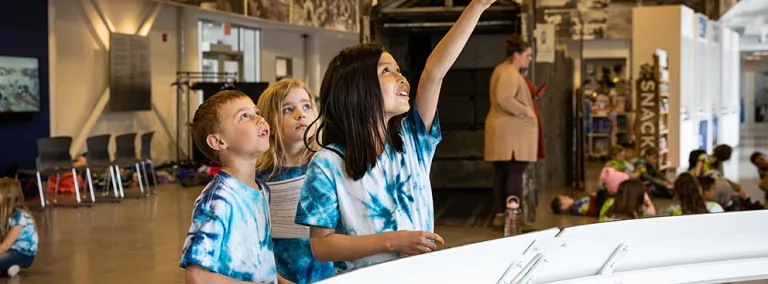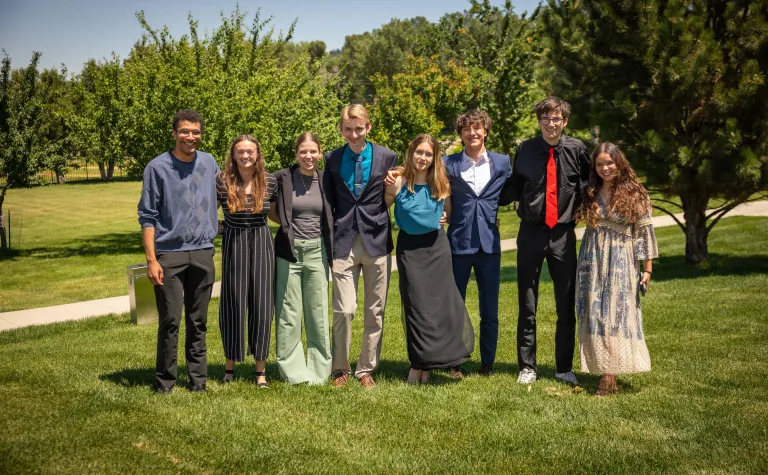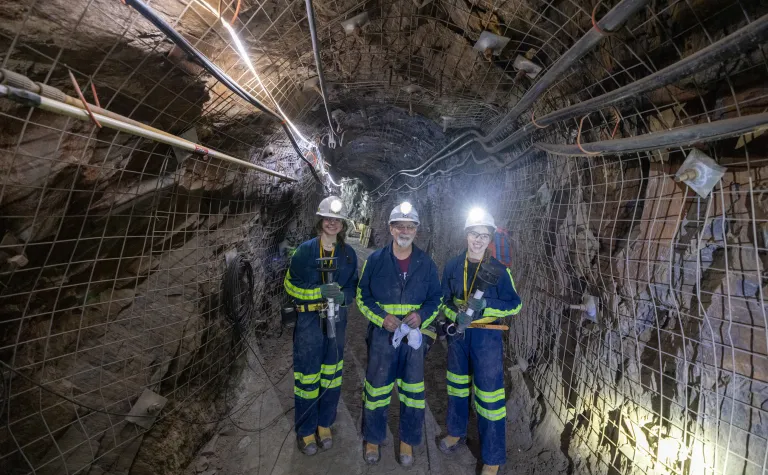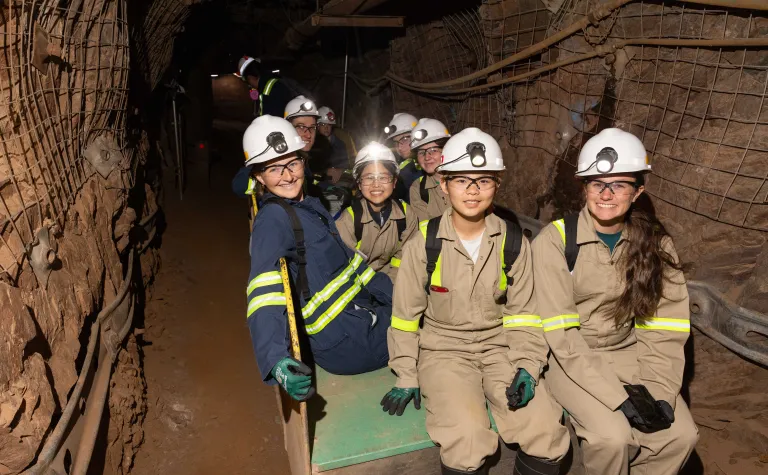SURF part of BHSU-led team awarded $8M NSF Grant to support STEM Education in South Dakota
SURF plays a unique role in supporting K-12 teachers and inspiring the next generation of STEM leaders in South Dakota.
The U.S. National Science Foundation (NSF) has awarded a team led by the Center for Advancement of Math and Science Education (CAMSE) at Black Hills State University roughly $8 million through the Established Program to Stimulate Competitive Research (EPSCoR) Collaborations for Optimizing Research Ecosystems Research Infrastructure Improvement Program (E-CORE RII) to enhance the state's research and development (R&D) competitiveness and promote scientific progress nationwide.
Over the next four years, the team’s project will work to meet the challenge of creating pathways for young learners to develop interest and confidence in STEM and become motivated to work in STEM fields across the largely rural jurisdiction of South Dakota. The project aims to engage STEM researchers and K-12 teachers and students to create a pipeline of the next generation of the South Dakota STEM workforce that could become a national model for connecting individuals that are geographically isolated to STEM education at the pre-college level and into post-secondary.
“We are deeply honored to have received one of NSF’s first ever grants of this type. We are grateful to our partner institutions and are eager to collaborate with even more STEM education leaders and STEM researchers across the state over the next four years,” said Ben Sayler, director of CAMSE and lead principal investigator of the project. “This project is ultimately about getting more South Dakota youth to become excited about STEM, to believe they are capable of contributing within STEM fields, to pursue more STEM learning opportunities in school, and to be well supported for success in STEM.”
The project's collaborative approach involves multiple stakeholders, including universities and industry partners. By fostering partnerships between these entities, the initiative aims to create a comprehensive and sustainable STEM education network that will benefit students across the state.
Collaborating institutions include Oglala Lakota College, the University of South Dakota, the South Dakota Mines, Dakota State University, South Dakota State University, Augustana University, Northern State University, Sinte Gleska University, Sisseton Wahpeton College, the Sanford Underground Research Facility, and the South Dakota Discovery Center.
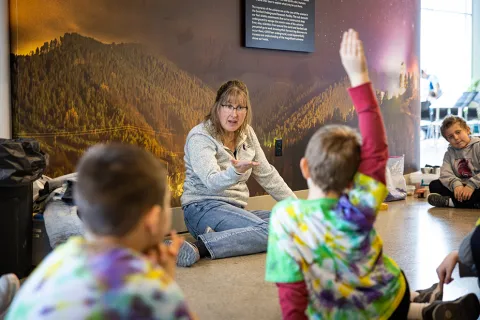
Julie Dahl, and education specalist at SURF, interacts with grade school students on the floor of the Sanford Lab Homestake Visitor Center. Each year, educators at SURF reach 16-20,000 South Dakota K-12 students in both urban and rural schools across the state with hands-on activities designed to spark curiosity, grow problem solving skills, and build understanding and excitement for the pursuit of science, technology, engineering, math and more.
Photo by Matt Kapust
SURF plays a unique role in supporting K-12 teachers and inspiring the next generation of STEM leaders in South Dakota. Each year, educators at SURF reach 16-20,000 South Dakota K-12 students in both urban and rural schools across the state with hands-on activities designed to spark curiosity, grow problem solving skills, and build understanding and excitement for the pursuit of science, technology, engineering, math and more.
"SURF Education & Outreach staff are extremely excited to be involved in this important grant supporting STEM education and research in South Dakota,” said Nicol Reiner, director of Education & Outreach at SURF. “The work SURF does to support students and educators and connect current research to the classroom is magnified in important ways through this grant, with its focus on enhancing STEM education, broadening participation, and engaging communities within and across South Dakota."
Established in response to the 2022 study of EPSCoR, the Envisioning the Future of NSF EPSCoR report and the "CHIPS and Science Act of 2022," E-CORE RII is a new program that aims to further EPSCoR's programmatic goals by building capacity in one or more targeted research infrastructure cores within an EPSCoR-eligible jurisdiction's research ecosystem.
"By boosting their state's R&D capabilities, these teams are poised to drive use-inspired research and transform STEM education and workforce development within their regions," said NSF Director Sethuraman Panchanathan. "This investment from NSF's E-CORE RII program underscores our commitment to advancing research and building robust research infrastructure hubs, fostering innovation ecosystems and creating pathways for economic growth and societal impact."
South Dakota was among just three states whose teams secured this grant. New Hampshire and Maine also received approximately $8 million each, contributing to a total investment of around $24 million from the NSF.
